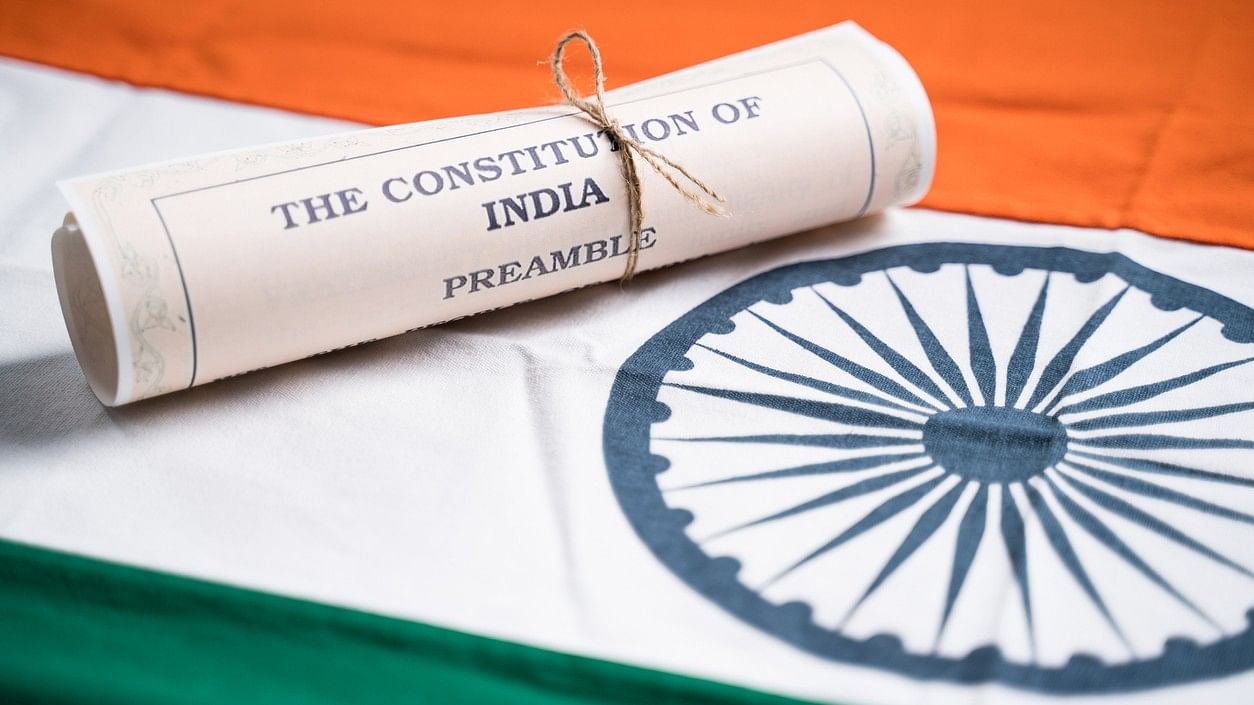
Representative image
Credit: iStock Photo
Most of the important revenue-generating taxes, such as income tax, customs duty, and excise duty, fall under the Union list of Schedule 7 of the Constitution of India. This has led states to depend on the Centre for financial resources. One of the vexed problems in India’s federal polity is the recurring complaints by several states, particularly southern states, about unfair treatment in resource allocation by the Centre.
The revenue gap, defined as states’ revenue expenditure minus their own tax revenue, was below 6 per cent between 2005–06 and 2013–14 but jumped to 8 per cent during 2017–18 and 2018–19. So, what is the extent to which tax devolution by the Centre helps to fill up the states’ revenue gaps? The tax devolution by the Centre as a percentage of GDP has increased from 2.8 per cent in the late 1980s to 4 per cent of GDP in recent times. Tax devolution or revenue devolution by the Centre helped to fill up the states’ revenue gap by about 33 per cent to 38 per cent during the award periods of the 9th to 11th Finance Commissions.
Uttar Pradesh, with a population of 23.15 crore, surpasses the population of many countries. In 2022–23, UP’s GSDP was Rs 20.48 trillion, contributing nearly 7.52 per cent to India’s nominal GDP (Rs 272.41 trillion). The state’s economy is the third largest among all Indian states, with an estimated expenditure (excluding debt repayment) of Rs 5.83 lakh crore in 2022–23.
The adoption of 2011 Census data as the base population by the 14th and 15th Finance Commissions, as opposed to 1971 Census data earlier, has amplified complaints about resource devolution. Southern states had stabilised their populations in line with policy demands. As per the 15th Finance Commission, UP’s resource allocation ratio stands at 17.94 per cent, while its contribution to the national GDP (and to the national exchequer) is less than 10 per cent.
The southern states, with a higher contribution to the national exchequer and lower allocation ratios, may not have much complaint about some of their money being routed to the poorer states for better healthcare, education, and basic amenities. But the glaring problem in the resource allocation is that UP is cornering a lion’s share of resources by virtue of its population, which seems unfair to other states.
The resource devolution criteria assign 15 per cent weightage to population, with the remaining 85 per cent distributed among factors like area, ecology, income distance, fiscal efforts, and demographic performance. The factors listed above are calculated for each state and then scaled again by that state’s population to arrive at the final allocation share. A state’s population has a non-linear effect on the eventual allocation ratio. In other words, since multiple factors are scaled by population, the impact of population on the end ratio becomes almost exponential.
States like Madhya Pradesh, Chhattisgarh, Rajasthan, Bihar, Jharkhand, and Uttarakhand share similarities with UP but receive proportionately lower resource allocation ratios. A large 45 per cent of the total weightage is assigned to “income distance” in the resource allocation criterion. The income distance of a state is determined by comparing its average per capita GSDP over three years to that of Haryana, which is considered a prosperous state. This income distance is scaled by the 2011 population of each state. The end result makes income distance a metric that is heavily correlated to the population of 2011. Hence, states with similar “income distance” as that of UP do not get the same resource devolution as UP. The state with the highest population ends up getting an outsized share in resource allocation.
Another state that benefits disproportionately from the exponential effect of population on allocation ratios is Maharashtra. As the second-most populous state, Maharashtra has avoided the fate of other industrialised and developed states like Gujarat, Tamil Nadu, and Karnataka, which have experienced a significant reduction in their share of resource devolution.
Populous or large states corner higher resources even when compared to other states with similar development metrics. A useful way to understand this problem is to look at the allocation ratios of Jharkhand and Chhattisgarh—states carved out of Bihar and Madhya Pradesh, respectively. The development metrics of Jharkhand and Chhattisgarh are either at par or worse than their parent states. But they have negative residuals (resource allocation/budget expenditure vis-à-vis state GSDP) compared to their parent states.
The exponential impact of a state’s population on resource allocation needs to be neutralised. The solution could be either imposing a cap on the population size of a state in the resource allocation criteria or creating smaller states from larger ones.
(The writer is a retired corporate professional)